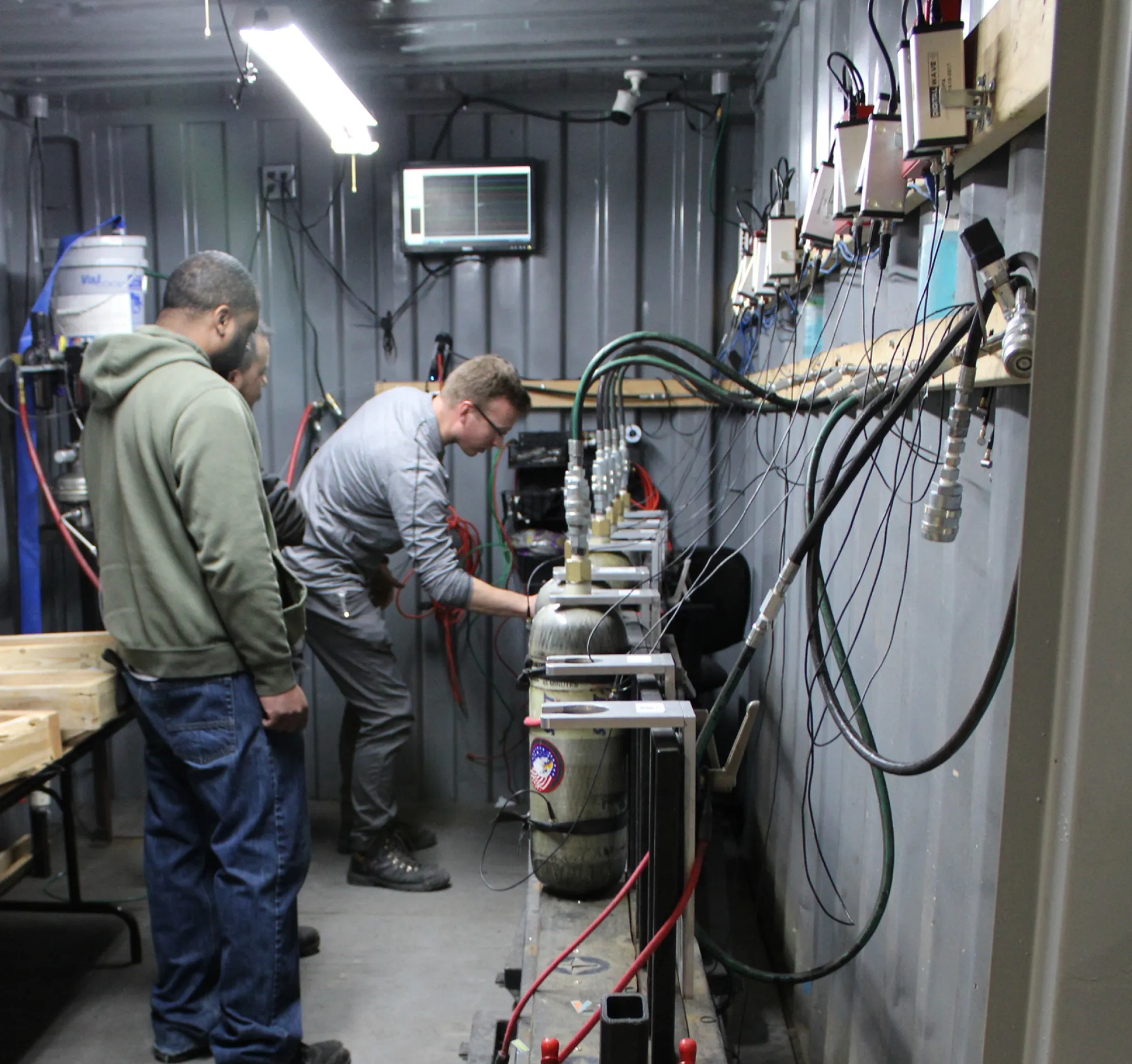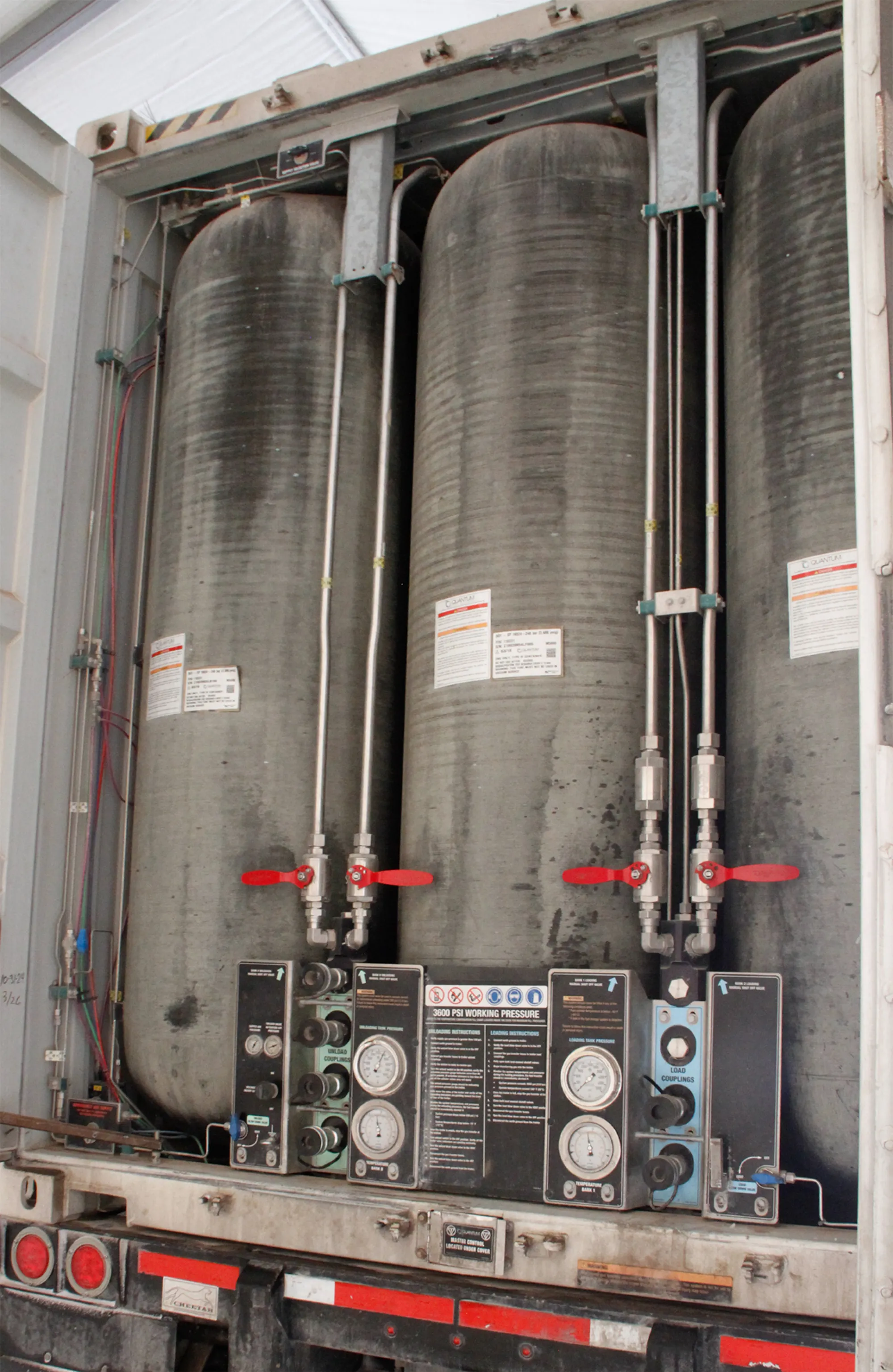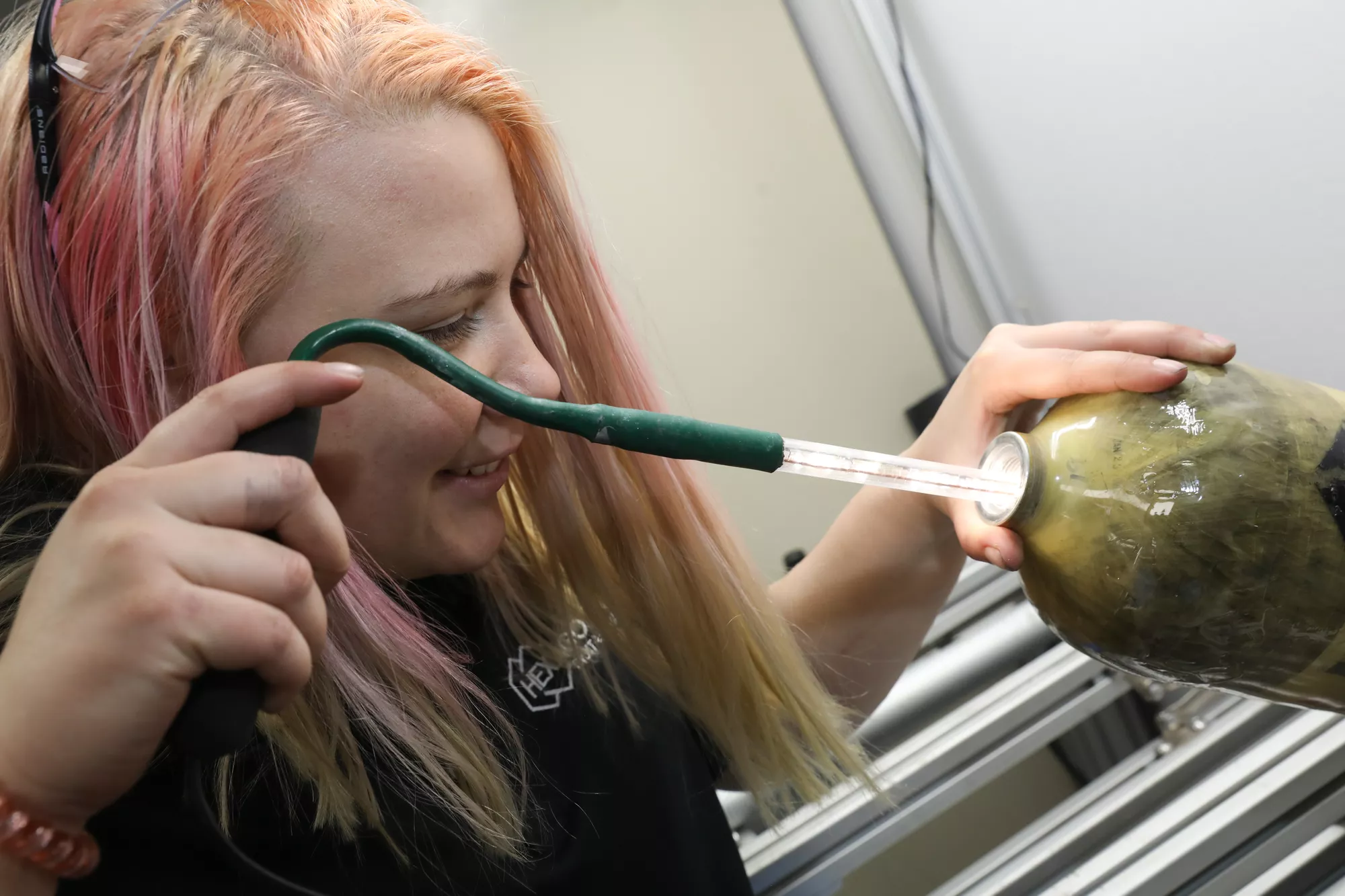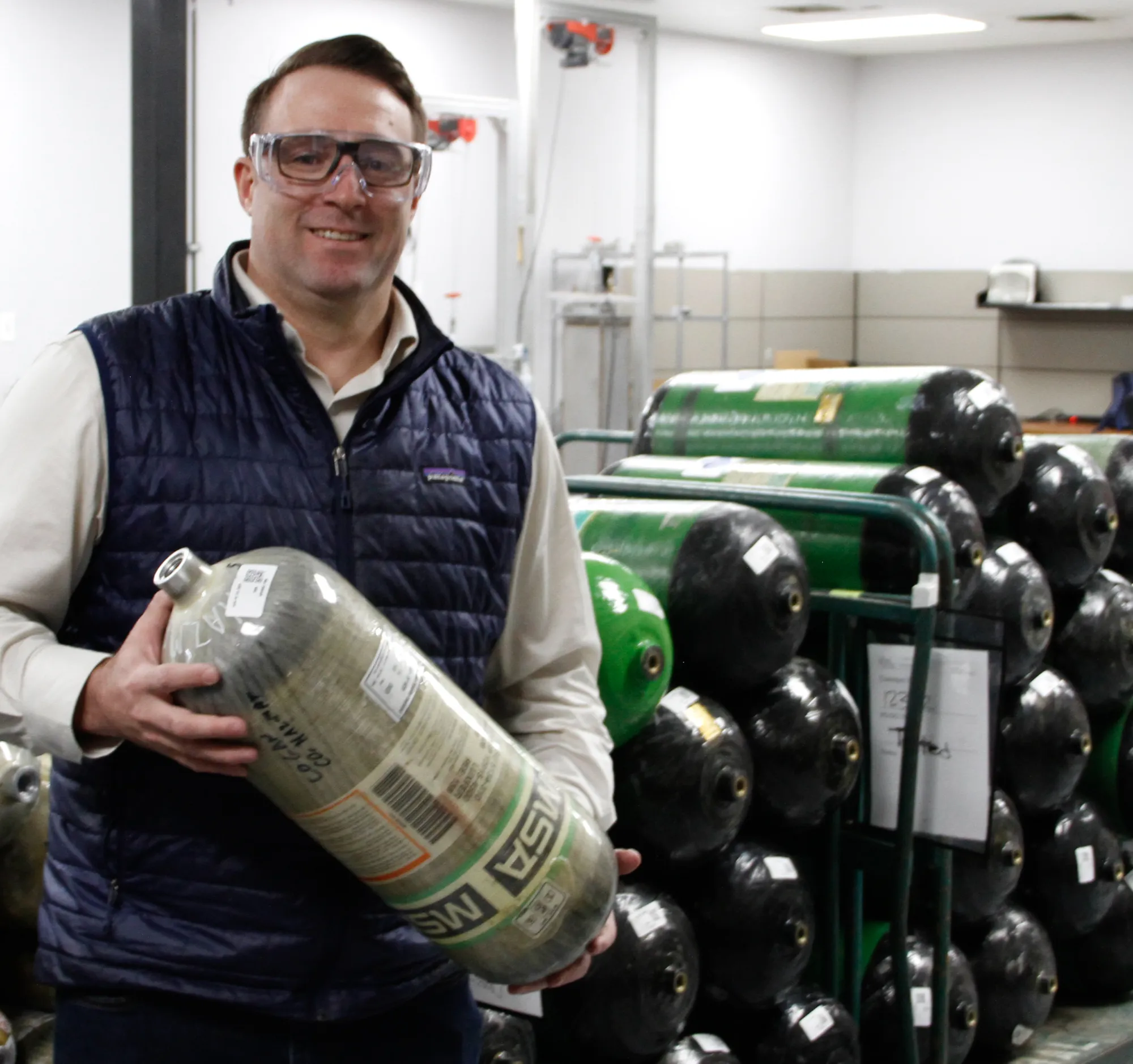Testing and qualifying composite cylinders using high-bandwidth stress waves
Hexagon Digital Wave was the first company to offer Modal Acoustic Emission (MAE) testing, and we continue to pioneer new improvements for this revolutionary test methodology. While there are many potential applications for MAE, we currently offer it in two very important areas:
Extending the life of SCBAs (self-contained breathing apparatuses) used in firefighting from 15 to 30 years – doubling their lifespan for minimal cost.
Requalifying natural gas, hydrogen and other industrial gas cylinders in situ – saving the weeks or months required by traditional hydrostatic testing to physically remove the cylinders, test the cylinders and then reassemble the system correctly.






